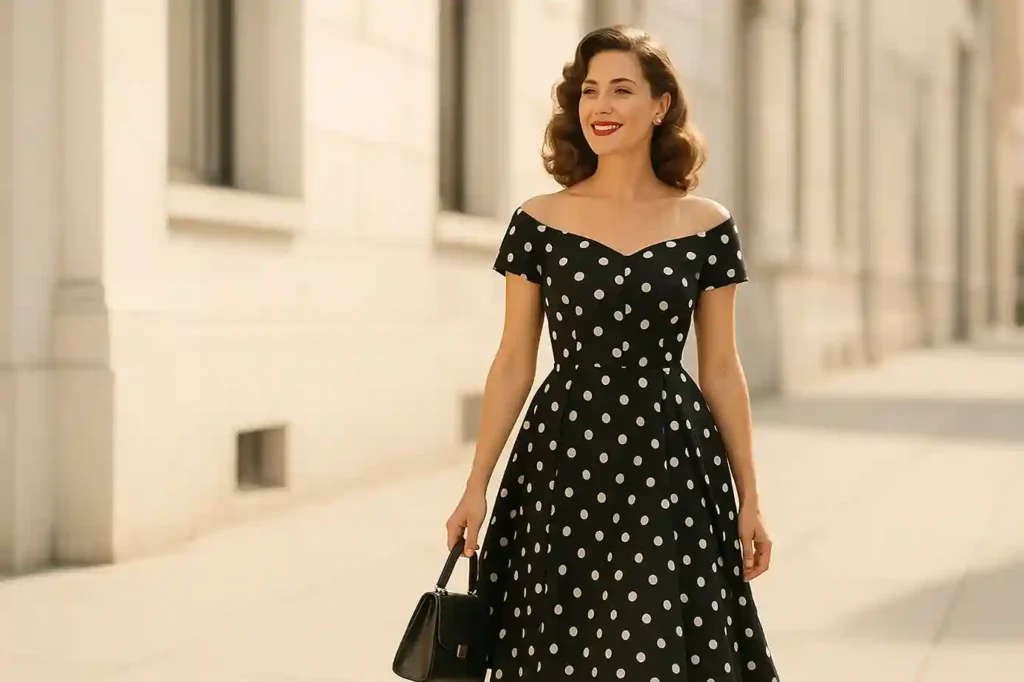Hidden History with Flair
Polka dots have held a timeless place in fashion and culture. The repeating circles may look simple, yet they create an effect that feels lively and elegant at the same time. For centuries, polka dots have appeared in clothing, accessories, art, and design, carrying both playful energy and a touch of sophistication. Their universal appeal lies in balance—lighthearted enough for casual wear, yet refined enough for classic fashion.
The story of polka dots is more than a tale of patterns on fabric. It is a journey through history, creativity, and human emotion. What began as a decorative motif soon became tied to cultural moments, from the popularity of a 19th-century dance to the glamour of Hollywood icons. Along the way, polka dots have symbolized joy, femininity, nostalgia, and bold artistic expression.
This blog traces the hidden history of polka dots. It explores their origins, their rise in art and entertainment, and their power on fashion runways. It also shows why polka dots continue to inspire modern designers and how they remain part of everyday style. By looking at the past and present, we can see why this pattern endures as more than just decoration—it is a lasting emblem of charm, creativity, and timeless flair.
The Origins of Polka Dots
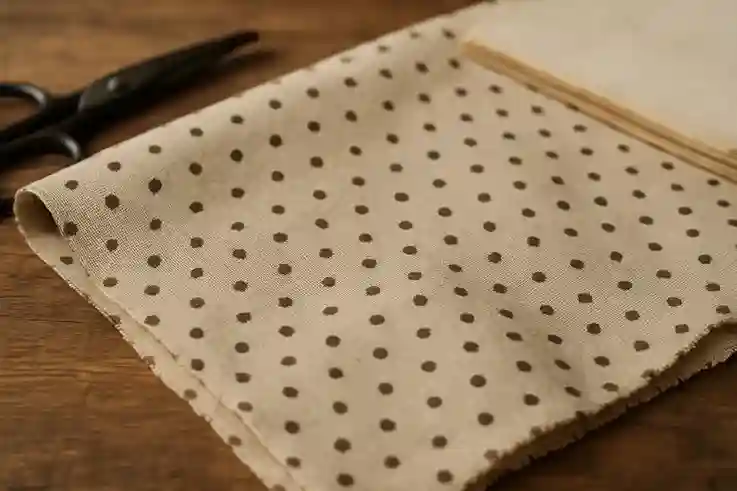
Early Textiles and Printing
The earliest versions of polka dots appeared when textile makers experimented with printing methods. Early machines often produced irregular spots instead of clean designs. What began as mistakes slowly became decorative choices. As printing improved in the 18th and 19th centuries, dotted fabrics gained recognition for their distinct, rhythmic charm.
The Polka Dance Connection
The name “polka dots” reflects a cultural trend of the 19th century. The energetic polka dance became wildly popular across Europe and America. Manufacturers used the dance’s name to sell products, hoping to capture its lively spirit. The dotted pattern, with its repeating rhythm, was a natural fit. The name polka dots stuck, linking the fabric to joy and movement.
Early Cultural Associations
Polka dots carried symbolic meaning from the start. Some cultures viewed the circles as signs of good fortune or protection. Others saw them as playful, reflecting the carefree nature of the dance. By the late 19th century, polka dots had spread into everyday clothing and home textiles, marking their place in both style and tradition.
Polka Dots in Early Fashion History
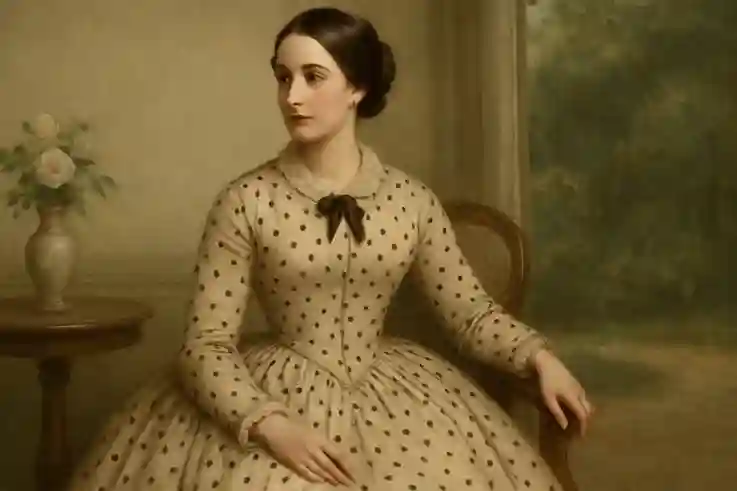
Entering European and American Clothing
Polka dots became a visible trend in Europe and the United States during the 19th century. The pattern shifted from novelty textiles to mainstream fashion, appearing in everyday wear. Women’s dresses and children’s outfits often carried dotted designs, which conveyed charm, playfulness, and elegance. By the mid-1800s, polka dots were no longer just decorative—they were part of cultural fashion identity.
Role of Print Technologies
The spread of polka dots was closely tied to advances in textile printing. Improved roller-printing machines made it possible to create repeating circles with accuracy and speed. This efficiency brought dotted fabrics to a broader audience, lowering costs and increasing accessibility. As print technologies developed, the pattern moved from niche markets into homes and wardrobes across social classes.
Early Examples in Fashion
Early fashion embraced polka dots in subtle but meaningful ways. Women’s dresses often featured dotted fabrics as accents or full patterns, reflecting both sophistication and trend. Accessories like scarves, ribbons, and hats also displayed dots, adding a lively touch to everyday style. In children’s clothing, polka dots were especially common, symbolizing innocence, cheer, and lighthearted fun. By the late 19th century, the pattern had established itself as a fixture in fashion, admired for its versatility and timeless appeal.
Polka Dots in Art and Culture
Polka Dots in Visual Art
Artists have long used polka dots to explore rhythm, repetition, and visual energy. Among the most famous is Yayoi Kusama, whose work transforms dots into immersive environments. Her art shows how a simple pattern can carry deep psychological and emotional meaning. Other modern artists have used dots to challenge traditional ideas of form, balance, and perspective.
Polka Dots in Music, Film, and Theater
Polka dots also made their mark in entertainment. Costumes in theater often used dotted fabrics to highlight playfulness and charm. In film, the pattern became iconic through stars who wore dotted dresses, creating memorable style moments on screen. Music culture, too, embraced polka dots, linking them with lighthearted energy and youthful spirit. Each medium helped reinforce the dots as symbols of joy and accessibility.
A Symbol of Creativity and Playfulness
The appeal of polka dots extends beyond fashion and performance. Their repeating yet simple design sparks a sense of balance and movement. This combination has made them a universal symbol of creativity. At the same time, dots evoke playfulness, reminding audiences of childlike wonder. Across art and culture, polka dots represent both innovation and fun, bridging high art with popular taste.
Polka Dots and Hollywood Glamour
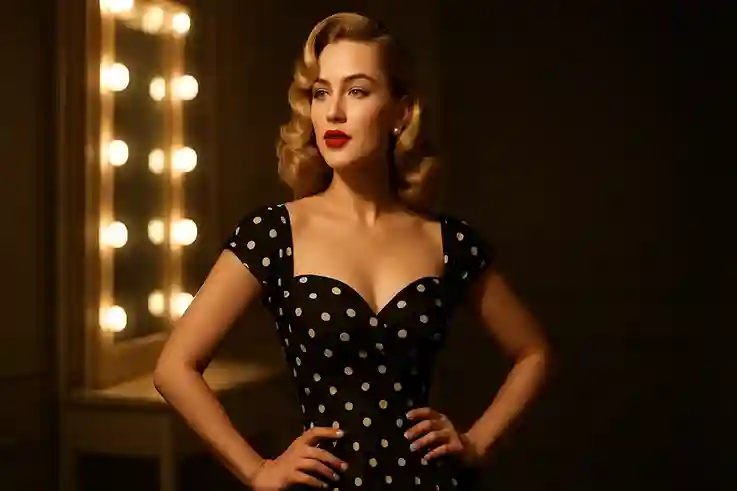
Iconic Stars and Polka Dots
Hollywood played a major role in popularizing polka dots. Icons like Marilyn Monroe and Audrey Hepburn wore dotted dresses that captured worldwide attention. Their style choices turned the pattern into a symbol of elegance and charm. When these stars appeared in photographs and films, polka dots instantly gained cultural prestige.
Mid-20th-Century Style and Femininity
During the 1940s and 1950s, polka dots became closely linked with femininity. The pattern was often seen on fitted dresses, swimwear, and accessories, reflecting both sophistication and playful energy. Polka dots offered women a balance between glamour and approachability, making them a defining feature of mid-century fashion. The design also echoed the optimism of post-war culture, reinforcing feelings of joy and renewal.
Global Impact Through Cinema and Photography
Cinema and fashion photography helped spread the dotted trend far beyond Hollywood. International audiences embraced the look after seeing it on the big screen. Fashion magazines featured polka dot styles worn by beloved stars, giving the pattern global influence. Through these mediums, polka dots became a universal style language, blending glamour with everyday wear across cultures.
The Modern Reinvention of Polka
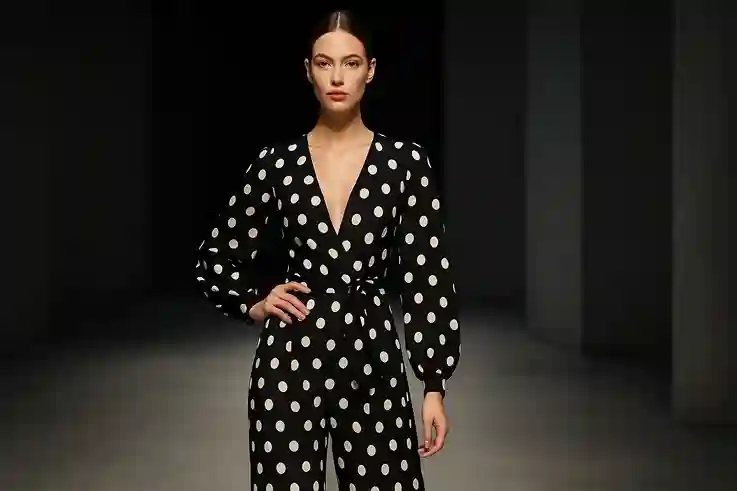
Designers Reinterpreting the Classic
Modern designers continue to reimagine polka style in fresh and unexpected ways. Instead of only using uniform circles, many experiment with scale, color, and layering. Oversized dots appear next to micro patterns, creating dynamic contrasts. Others use dots in abstract placements, pushing the pattern beyond tradition and into contemporary art-inspired fashion.
Influence of Key Style Movements
The resurgence of polka dots is shaped by larger fashion movements. Quiet luxury favors subtle dotted accents in muted tones, offering elegance without excess. In contrast, maximalism embraces bold, oversized dots in bright colors, creating playful and dramatic statements. Retro revivals also draw heavily on mid-century polka dot designs, linking today’s trends with nostalgic charm.
Runway Trends Today
On today’s runways, Timeless dots are everywhere. Designers showcase dotted gowns, tailored suits, and accessories, proving the pattern’s versatility. Dots appear in sheer fabrics, layered textures, and unexpected color palettes. This adaptability keeps them relevant across high fashion, streetwear, and global markets. Polka dots remain a canvas for reinvention—timeless, yet always evolving.
Why Polka Dots Endure in Fashion
Emotional Appeal
Polka styling carry a powerful emotional weight. They evoke nostalgia, reminding many of childhood clothing, vintage films, or family photographs. At the same time, they inspire joy with their playful and lively energy. Their ability to connect elegance with fun gives them a unique charm that few patterns can match.
The Psychology of Patterns
Humans are naturally drawn to repetition and rhythm. Polka dots offer both in a simple yet striking way. The repeated circular shape creates harmony and balance, which the brain finds pleasing. This psychological comfort helps explain why the pattern continues to resonate across cultures and generations.
Endless Versatility
Few patterns adapt as easily as polka dots. They fit into formal gowns, casual streetwear, and bold experimental designs. A dotted silk dress can signal refinement, while a playful dotted shirt suggests creativity. This versatility ensures that timeless dots remain relevant, moving seamlessly between trends while keeping their timeless appeal.
Polka Dots in Everyday Style

Simple Ways to Wear Polka Dots
Polka styling remain an easy way to add personality to any outfit. A dotted blouse or skirt creates interest without overwhelming the look. For a more subtle touch, accessories like scarves, handbags, or shoes can introduce the pattern in a balanced way.
Mixing Prints with Confidence
Polka dots also pair surprisingly well with other prints. Stripes, florals, or even checks can complement dots when styled thoughtfully. The key is scale—pairing large dots with smaller patterns prevents visual clutter. Neutral color palettes further help mixed prints feel cohesive and stylish.
Styling for Any Occasion
Polka dots adapt easily to different settings. A structured dotted dress works perfectly for the office, projecting both confidence and charm. For leisure, dotted T-shirts or casual dresses keep the look playful and relaxed. At formal events, polka dots on elegant fabrics like silk or chiffon elevate the outfit into timeless sophistication.
The Future of Polka Dots

The future of polka looks as vibrant as their past. Designers continue to revisit the pattern, reshaping it for changing tastes and technologies. Digital fashion is opening new doors, where polka dots are no longer bound by fabric. Virtual garments and augmented reality styling allow dots to shift in color, size, and movement, creating dynamic effects that cannot exist in traditional textiles.
AI-driven design also plays a growing role. Algorithms can generate endless variations of patterns, blending polka dots with unexpected shapes, textures, or gradients. This gives designers fresh ways to experiment while keeping the essence of the motif intact. As digital fashion spreads, consumers may soon wear polka dots both in physical wardrobes and virtual spaces.
Despite these innovations, polka dots remain timeless. Their emotional appeal—playfulness, joy, and a sense of nostalgia—ensures they never feel outdated. Whether minimal, bold, or futuristic, dots adapt to every era while retaining their familiar charm. This balance of tradition and reinvention is what guarantees their place in the fashion stories yet to come.
Conclusion
Polka styling have traveled a remarkable journey, from humble textiles to global fashion icons. They carry stories of culture, art, and style, bridging generations with their playful yet graceful appeal. Each era has reinvented them, but their core charm has never faded.
As fashion enters an era shaped by technology and digital design, polka dots continue to adapt. They prove that a simple pattern can remain endlessly expressive, whether on vintage dresses, modern runways, or even virtual wardrobes. Their resilience lies in their ability to balance joy with sophistication, making them both nostalgic and forward-looking.
Polka dots are more than a pattern—they are a symbol of creativity and timelessness. They remind us that style evolves, but beauty in simplicity endures. The story of polka dots is still unfolding, and their future promises as much brilliance as their past.
Historical textile records from GovInfo even described fabrics “with small white polka dots,” showing how early industrial standards noted the pattern in formal descriptions. (U.S. GovInfo, Serial Set)
FAQs
Call to Action
Polka style have danced through history with elegance and charm, yet their story continues to evolve.
Do you wear polka dots as a playful statement, a touch of nostalgia, or a symbol of timeless style?
Share your thoughts and favorite polka dot looks in the comments below

Ellie Clark is a passionate blogger with a specialty in education, where she shares insights on learning methods, study strategies, and ways to make knowledge more accessible. With a background in teaching and a love for lifelong learning, she brings clarity and creativity to her writing, helping readers of all ages unlock their potential. While education remains her core focus, Ellie also writes on a variety of other topics, including lifestyle, travel, and personal development, giving her blog a well-rounded appeal.
When she’s not writing, Ellie enjoys reading, exploring new cultures, and spending time in nature. Her approachable style and thoughtful advice make her a trusted voice for readers seeking both guidance and inspiration.
